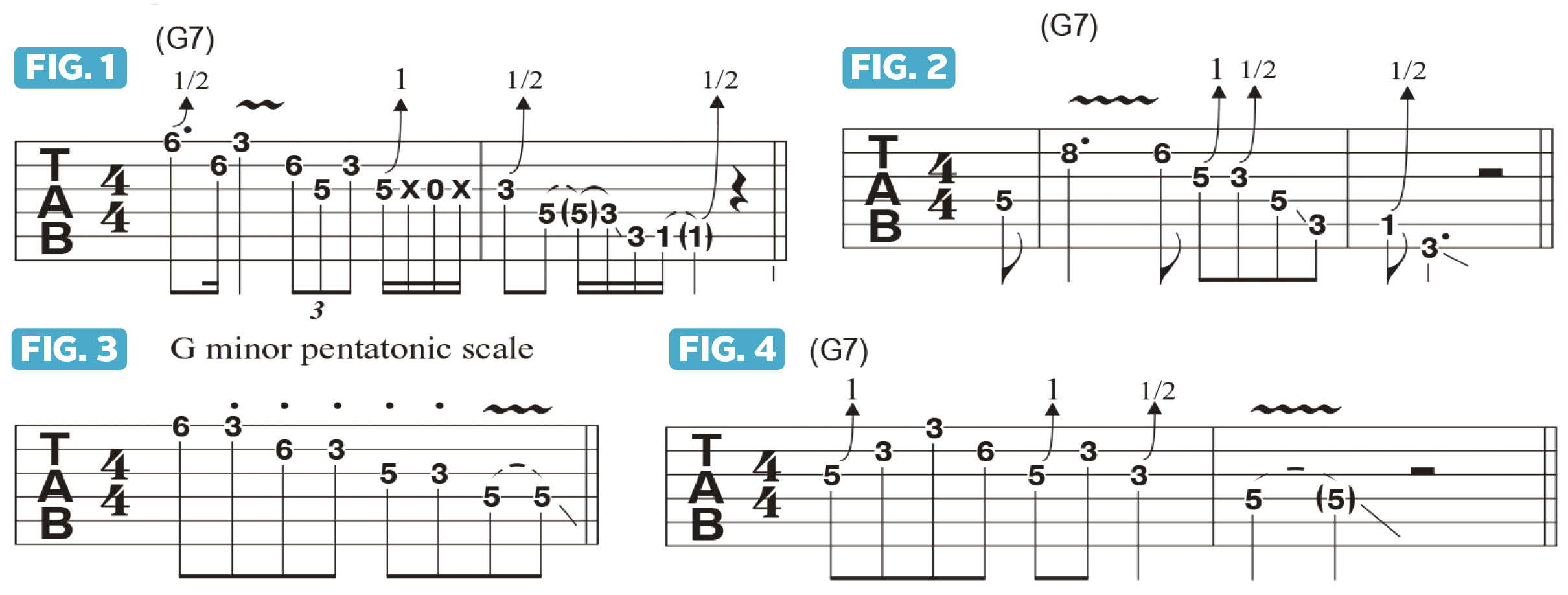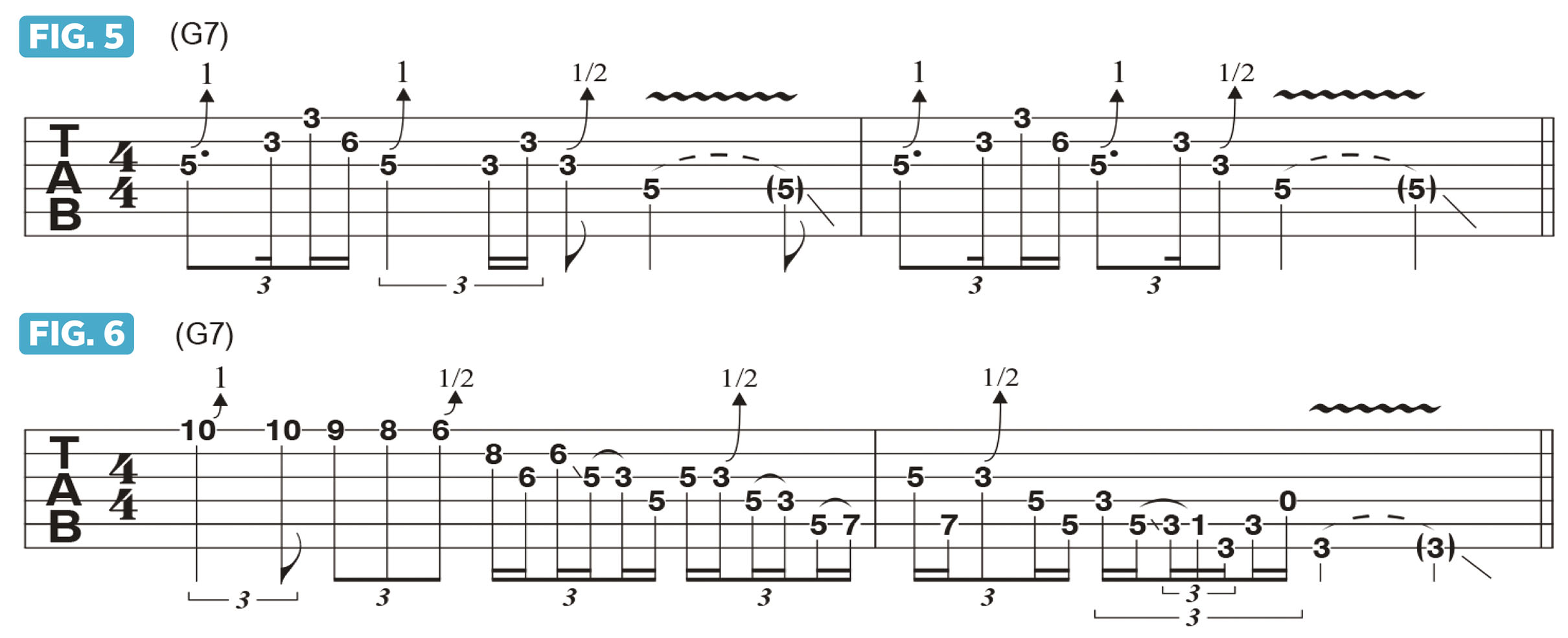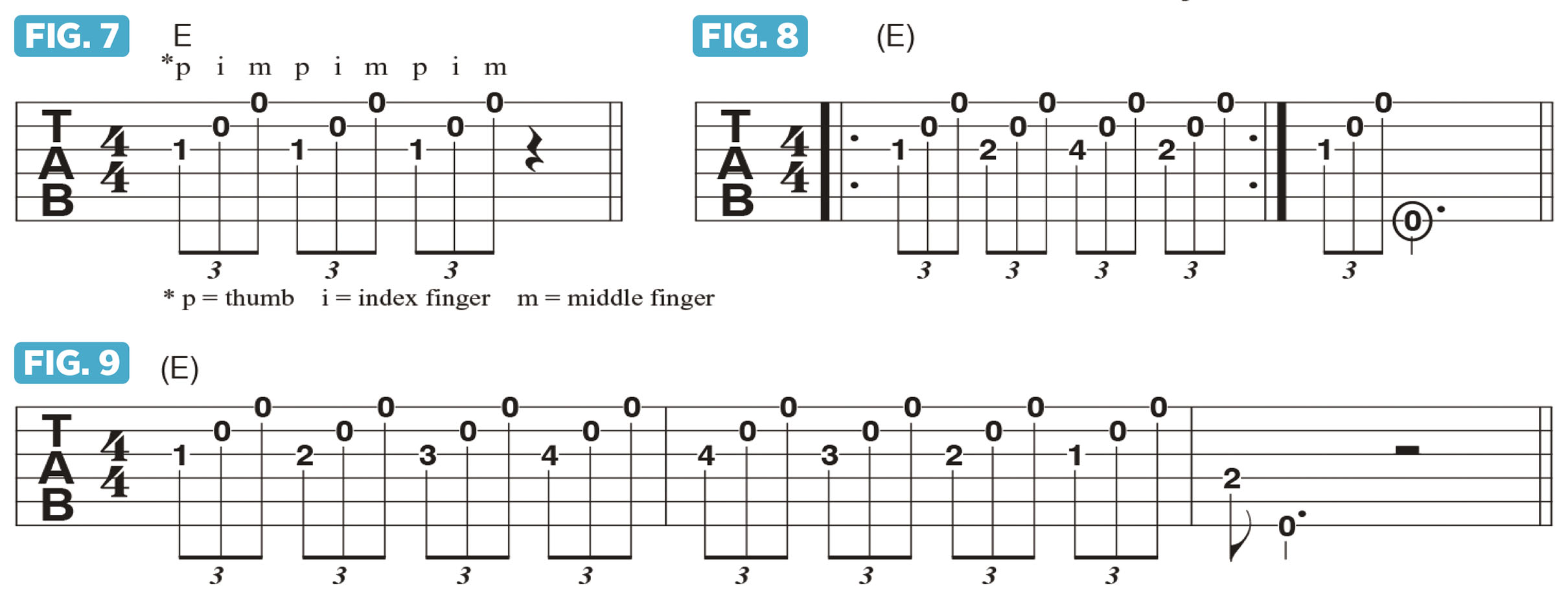
In this lesson, I’d like to delve deeper into what I feel are the advantages of fingerpicking. There are so many sounds to be discovered when one gets away from using a pick.
I like to incorporate “chicken pickin’” sounds, as well as snapping the strings against the fretboard, to give my playing some “snap, crackle and pop.”
To me, an important determining factor in the sound and feel of a riff is which pick-hand finger I use to attack certain notes.
For example, Figure 1 shows a bluesy riff based on the G minor pentatonic scale (G, Bb, C, D, F). I begin on a high Bb note, which I pick with my index finger, snapping the string against the fretboard while bending it up a half step to B.
My thumb then picks an F “ghost note” on the B string, followed by a snapped and vibrato-ed G root note on the high E string.
On beat 4 of bar 1, after bending C to D on the G string, I incorporate a “chicken pickin’” sound by alternately picking the G string with my thumb and index finger: the thumb picks the fret-hand-muted notes (indicated by Xs), and the index finger picks the open G note.

Players that come to mind in regard to this technique are Johnny “Guitar” Watson, Albert King and Albert Collins.
Figure 2 presents a lick played in Collins’ distinctive style. Here, I move from a low G root note to an aggressively snapped and vibrato-ed high G. I begin by alternately picking with my thumb and index finger, and the last four notes are all thumb-picked.
A good exercise is to take a pentatonic scale and snap every note. In Figure 3, the index finger picks every note in the G minor pentatonic scale.
Ultimately, you don’t want each note to have the same articulation, so it’s important to experiment with the amount of pressure you apply to a string when snapping it. In Figures 4 and 5, I change my fingerpicking attack slightly for each note.

It’s really about an attitude adjustment! This is a great concept for spicing up a simple riff.
Figure 6 offers a longer phrase, in which I vary the intensity of my pick attack to add feeling and musical expression.
Another of my favorite fingerpicking techniques is the “banjo roll,” which involves successively picking three adjacent strings with the thumb and first two fingers, rolling from the low to high.
Figure 7 is played in the key of E on the top three strings and consists of the notes G#, B and E, picked in this manner.

In Figure 8, I use the same fingerpicking technique while moving the notes on the G string from G# to A to B and back.
In Figure 9, I add Bb to the mix, moving from G# to A to Bb to B and then back down, and in Figure 10 I move all the way up to the 12th fret and back in a quicker rhythm.

Alternating between snapping the strings against the fretboard and incorporating banjo rolls is a great way to get your playing “out of the box,” especially when you add some speed to the rolls.
- This article first appeared in Guitar World. Subscribe and save.







